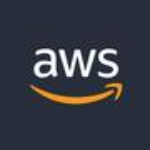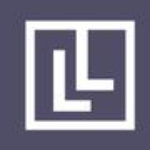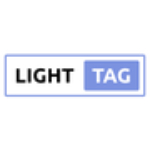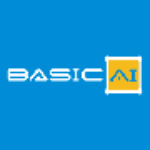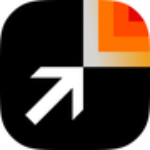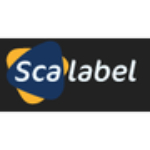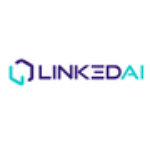TechnologyCounter provides genuine, unbiased real user reviews to help buyers make informed decisions. We may earn a referral fee when you purchase through our links, at no extra cost to you.
List of 15 Best Data Labeling Software
Showing 1 - 15 of 22 productsAmazon SageMaker Ground Truth is the powerful, innovative solution for labeling and annotating data accurately is a ly. With its advanced capabilities and customizable workflows, SageMaker Ground Truth is the go-to choice for businesses looking to st...Read Amazon SageMaker Ground Truth Reviews
Kili Technology is a and innovative software company that is revolutionizing the way businesses operate. With years of expertise in the technology industry, Kili Technology offers versatile solutions to help businesses thrive and reach their full pot...Read Kili Technology Reviews
SuperAnnotate is a Data Labeling Software that caters to the needs of Startups, SMEs, and Enterprises. It is a versatile online system that offers a complete solution for Web App. This platform seamlessly integrates IoT (Internet of Things), Artific...Read SuperAnnotate Reviews
Appen is a leading provider of high-quality data for machine learning and artificial intelligence. Since its inception in 1996, Appen has been dedicated to bridging the gap between humans and machines by creating accurate and diverse data sets. With...Read Appen Reviews
Alegion is a software that utilizes the latest technology to deliver exceptional results for all your data labeling and management needs. With a user-friendly interface, advanced data algorithms, and seamless integration, Alegion is a solution for st...Read Alegion Reviews
Datasaur is a tool for data management. Designed to streamline your data organization process, Datasaur is specially crafted to meet all your data needs. With its user-friendly interface features, Datasaur is the go-to software for efficient data man...Read Datasaur Reviews
Diffgram the innovative software that simplifies data labeling and annotation for machine learning projects. With its user-friendly interface features, Diffgram streamlines the process of creating high-quality training data, making it an essential to...Read Diffgram Reviews
V7 is a software designed to streamline your business processes and boost efficiency. With its user-friendly interface features, V7 is a solution for businesses looking to take their operations to the next level. Say goodbye to tedious tasks and hell...Read V7 Reviews
Labellerr is a software that simplifies and streamlines the image labeling process. With its user-friendly interface features, Labellerr makes labeling images accurate is a , saving you time and effort. Say goodbye to tedious labeling tasks and hello...Read Labellerr Reviews
Prodigy, the innovative software designed to revolutionize the way we work. With its advanced features and user-friendly interface, Prodigy simplifies tasks and increases productivity. Say goodbye to the complexities of traditional software and embra...Read Prodigy Reviews
LightTag is a tool that revolutionizes the way you annotate and label data. With its user-friendly interface features, LightTag allows you to streamline your data labeling process, saving both time and effort. Say goodbye to complicated and inefficie...Read LightTag Reviews
BasicAI is a software that streamlines and automates basic tasks, freeing up valuable time for more important tasks. With its intuitive interface is a algorithms, BasicAI is the tool every business needs to boost productivity and stay ahead of the ga...Read BasicAI Reviews
CVAT is a versatile and powerful software designed specifically for computer vision tasks. With its user-friendly interface features, it streamlines annotation, labeling, and object tracking processes, making it a valuable tool for professionals in t...Read CVAT Reviews
Scalabel is a solution for all your labeling and annotation needs! With its advanced features and user-friendly interface, Scalabel has revolutionized the way data labeling is done. Say goodbye to manual labor and welcome an efficient and accurate la...Read Scalabel Reviews
LinkedAI, the ultimate tool that combines the power of artificial intelligence with the connectivity of social media. This innovative software streamlines your networking experience by effortlessly identifying and connecting you with the right people...Read LinkedAI Reviews
- What Is Data Labeling Software?
- Top Reasons Why Businesses Need Data Labeling Software?
- What Are the Top Key Features of Data Labeling Software?
- What Are the Top Benefits of Data Labeling Software?
- What Are the Steps to Choose the Right Data Labeling Software?
- What Are the Types of Data Labeling Software for Different Industries?
- What Are the Technology Trends for Best Data Labeling Software?
- What Are the Deployment Options for Data Labeling Software?
What Is Data Labeling Software?
Data labeling software is a type of software that enables users to manually categorize datasets. The process often entails the allocation of names or labels to individual data elements, enabling pattern recognition algorithms to identify patterns within the data.
As an illustration, a computational algorithm may be employed to allocate categorical designations to visual representations of feline and canine subjects. Subsequently, the assigned labels possess the capacity to be utilized by an algorithm for the purpose of discerning feline and canine entities throughout alternative photographs.
The best data labeling software is frequently employed to enhance the performance of machine learning models. The provision of appropriately labeled data enhances the algorithm's ability to detect objects with more accuracy, hence leading to more precise predictions.
The utilization of supervised learning, a fundamental technique in machine learning, holds significant importance in several applications including image identification, natural language processing, and medical diagnosis. The utilization of data labeling tool extends beyond its primary purpose, as it can also serve as a valuable tool for conducting exploratory data analysis.
Through the identification of patterns within unannotated data, the software possesses the capability to provide valuable insights pertaining to the interconnections among variables. This capability can assist enterprises in discerning latent patterns within their data.
Data tagging tools commonly has a graphical interface that is designed to be easily navigable and intuitive for users. This feature enables users to efficiently and conveniently allocate labels to data and track the advancement of the machine learning algorithm.
Top Reasons Why Businesses Need Data Labeling Software?
1. Improved data quality: The utilization of data labeling software enables the pre-approval of labels, so ensuring the appropriate organization and categorization of data.
2. Increased productivity: The implementation of automation through software can effectively decrease the amount of time required for human data input.
3. Transferability: The best data labeling software enables organizations to efficiently modify their files, encompassing textual, visual, and auditory elements, so facilitating their utilization across diverse applications.
4. Scalability: Data tagging tools enables organizations to efficiently and accurately generate many labels for a given data collection, hence optimizing resource utilization.
5. Unsupervised Learning: The utilization of algorithmic learning models in data labeling software enables the automatic generation of labels, resulting in significant time savings.
6. Increased Accuracy: The utilization of data labeling tool enables the expedited and precise detection and identification of patterns within datasets, surpassing the capabilities of manual data entry.
7. Improved Metadata: The utilization of data tagging software has the potential to enhance the value of data by furnishing significant contextual information.
. 8. Reduced Costs: The utilization of data labeling software has the potential to mitigate expenses linked to data labeling, including expenditures related to staff training and labor.
9. Coherent Labels: The utilization of data tagging tools can effectively guarantee the accuracy and adherence to the established standards of data labeling within an organization.
10. Reduced Risks: The utilization of data labeling software can contribute to the identification and alleviation of data mislabeling, hence mitigating the potential occurrence of expensive errors.
11. Crowdsourcing: The process of generating labels for data can be facilitated by employing data tagging software, which leverages crowdsourcing techniques to gather data from diverse sources.
12. Increased Efficiency: The utilization of automatically created labels from data labeling software has the potential to enhance operational efficiency by expediting operations, hence enabling firms to achieve cost and time savings.
13. Reduced Complexity: The utilization of data tagging tools mitigates the intricacies inherent in human data entering processes and minimizes the likelihood of errors.
14. Improved Collaboration: The utilization of the best data labeling software enables firms to facilitate the distribution of data labeling duties among several teams or departments, hence enhancing collaboration on a broader scale.
15. Infected Files: The utilization of data labeling tools facilitates the identification of potentially harmful files within datasets, hence enhancing the overall safety and security of the company.
What Are the Top Key Features of Data Labeling Software?
1. Image Annotation: The functionality of data labeling software should encompass the capability to annotate various types of media, including photos, videos, documents, and audio files, by assigning labels, text, and additional features that facilitate their identification and processing.
2. Automation: Automating the process of human-labeled data tagging, classification, and annotation jobs has the potential to significantly decrease the amount of time and resources required for manual labeling.
3. Integrity Checks: The implementation of integrity checks is crucial in guaranteeing the reliability and accuracy of data labeling.
4. Scalability: The capacity to adjust in accordance with fluctuating data labeling requirements is a significant attribute.
5. Security: The best data labeling software necessitates the incorporation of features and protocols that serve to safeguard the data and mitigate the risk of unwanted access.
6. Flexibility: The adaptability of data labeling tools is crucial in accommodating evolving requirements and environments.
7. Cost-Effective: The cost-effectiveness of data labeling enables enterprises to achieve high-quality outcomes while minimizing expenses.
8. Customization: A prominent attribute of data labeling solutions is their capacity to be tailored to suit certain use cases and industry specifications.
9. Integration: Seamless interaction with pre-existing hardware and software systems facilitates the expeditious and streamlined execution of data labeling procedures.
10. Data Visualization: Incorporation of functionalities for data visualization and data analysis should be considered in the development of data labeling software.
What Are the Top Benefits of Data Labeling Software?
The utilization of data labeling software offers numerous advantages.
These encompass:
1. Increased Efficiency: Data labeling software has the capability to automate various operations associated with data labeling, resulting in a significant reduction in both time and resources required. This enables corporations to efficiently and precisely annotate extensive datasets at a significantly reduced timeframe compared to manual approaches.
2. Reduced Cost: Automated data tagging tools offers the advantage of requiring a reduced amount of people, hence resulting in substantial cost reductions. Moreover, this software can frequently be acquired and utilized without incurring any or substantially reduced expenses.
3. Improved Quality: The utilization of automated data labeling tools ensures the reliability and precision of data labels, hence minimizing the occurrence of inaccuracies and errors.
4. More Accurate Results: The utilization of automated data labeling techniques offers enhanced levels of accuracy and precision, hence enabling data scientists and machine learning scientists to obtain more dependable and trustworthy insights from the data.
5. Increased Scalability: The scalability of data tagging software enables efficient labeling of extensive datasets within a short timeframe. This enables enterprises to effectively annotate vast quantities of data.
6. Standardization: The utilization of automated data tagging tools facilitates seamless sharing, editing, and scalability across various datasets, hence ensuring constant performance irrespective of the dataset's magnitude or intricacy.
7. Increased Accessibility: The utilization of software for data labeling can enhance the accessibility of data labels. This feature enables enterprises to efficiently and conveniently update, distribute, and manage their data labels across numerous datasets.
What Are the Steps to Choose the Right Data Labeling Software?
1. Identify your specific labeling requirements: Before selecting a data labeling program, it is imperative to ascertain the specific sort of data that necessitates labeling, the desired format for the labels, and the level of accuracy required.
2. Research the software options available: It is advisable to allocate sufficient time to thoroughly research and analyze the available literature on reviews and pricing structures pertaining to various labeling software alternatives.
When evaluating software, it is important to take into account several qualities such as integration capabilities, scalability, and ease of use.
3. Evaluate the software’s capabilities: In order to ascertain the suitability of software for addressing specific labeling requirements, it is advisable to engage in the evaluation of demo versions or to request product demonstrations. Assess the precision of the labeling and ascertain the compatibility of the program with your pre-existing data-labeling procedures.
4. Evaluate the cost of the software: It is important to carefully consider the cost of the labeling software in relation to your specific data-labeling requirements. One should take into consideration the pricing plans that are contingent upon the kind of the labels being generated, the level of precision associated with the labels, and the extent of usage volume.
5. Implement and Test: After selecting the most suitable data labeling software for your requirements, proceed to develop a strategy for incorporating the program into your labeling workflow and conducting comprehensive testing.
What Are the Types of Data Labeling Software for Different Industries?
Data labeling software is a tool that facilitates the process of annotating datasets across a wide range of industries and applications.
There are several prevalent categories of data tagging software that are commonly utilized:
1. Text annotation tools: Textual data such as customer reviews and customer support chats are commonly classified and annotated for organizational purposes.
2. Image annotation tools: Images and videos are commonly subjected to the process of labeling and categorization.
3. Automation-assisted annotation: Automation-assisted annotation solutions are employed to streamline the task of data labeling and minimize the need for personal intervention.
4. Audio annotation tools: Audio files are commonly employed for the purpose of annotation.
5. Natural language annotation tools: Labels are commonly employed to annotate natural language data, particularly in the context of conversational analytics.
6. 3D annotation tools: The purpose of this technology is to assign descriptive tags to three-dimensional datasets, which are subsequently employed in applications including Virtual Reality (VR) and Augmented Reality (AR).
7. Time series/sensor data annotation tools: Time series data, particularly in the context of the Internet of Things (IoT), is commonly categorized using labels. These labels are applied to many types of data, including sensor readings and activity logs.
8. Video annotation tools: Digital videos are commonly annotated for the purpose of facilitating face recognition, facial detection, categorization, and other related tasks.
What Are the Technology Trends for Best Data Labeling Software?
The utilization of data labeling software has gained significant traction among data scientists and practitioners in the fields of artificial intelligence and machine learning. The capacity to rapidly and precisely annotate datasets is crucial for the development of precise models. Automation is the central focus of the prevailing developments in data labeling software.
An increasing number of labeling solutions are being developed to facilitate the rapid labeling of data sets. These solutions include the implementation of automated technologies such as active learning, semi-automatic annotation, and natural language processing (NLP).
The implementation of automation has the potential to significantly decrease the temporal requirements for labeling data sets, hence resulting in a reduction of associated expenditures. Another emerging phenomenon in the field is the increased emphasis on collaborative efforts and the pursuit of greater accuracy.
Potential solutions may involve implementing features that allow both individuals and teams to annotate data, ensuring the quality of annotations through quality assurance measures, and providing feedback and rewards to those who perform the labeling tasks.
Furthermore, there are several tools designed for computer vision tasks, which may be seamlessly integrated with other cutting-edge technologies like voice recognition. This integration enhances the efficiency and accuracy of data labeling processes. In recent times, there has been a noticeable shift towards the portability of data labeling software.
This entails the optimization of such software to function efficiently across many devices and platforms, including desktop computers, laptops, smartphones, and tablets. This feature enhances the accessibility of data labelers to their work from any location, hence enhancing workflow efficiency.
In summary, the field of the best data labeling software is seeing significant advancements, characterized by the emergence of automation tools, improved collaboration and accuracy, and greater portability. The aforementioned trends have facilitated the process of data labeling, resulting in enhanced levels of ease and accuracy compared to previous methods.
What Are the Deployment Options for Data Labeling Software?
The selection of deployment options for the best data labeling software is contingent upon the specific characteristics of the software in question.
In a broad sense, apps have the capability to be implemented in one of three ways: as an on-premise software package, as a cloud-based solution, or as a hybrid model that combines elements of both.
1. An on-premise deployment of a data labeling software package entails the installation of the software and its corresponding databases within the confines of an organization's internal network infrastructure. This task can be accomplished internally or with the assistance of an automation professional or a managed services company.
One notable benefit of employing this approach is in the ability of businesses to maintain comprehensive authority over their data, encompassing aspects such as data security, privacy, and integrity.
2. The utilization of cloud-based deployment for a data labeling software enables customers to conveniently access solutions through a web browser or an Application Programming Interface (API). This alternative obviates the necessity for enterprises to allocate resources towards procuring their own server hardware or configuring a dedicated local environment.
Furthermore, the adoption of cloud-based systems offers the advantage of effortless scalability, allowing for seamless adjustments to suit the augmented demand resulting from the influx of new users.
3. In addition, enterprises have the option to employ hybrid solutions that integrate both on-premise and cloud-based deployments to effectively accomplish certain objectives. One such scenario involves organizations opting to retain sensitive data within their own premises while leveraging cloud-based deployment for the purpose of achieving scalability.
Ultimately, it is imperative for each organization to identify and assess their unique requirements in order to ascertain the most suitable deployment choice for their data labeling software.
